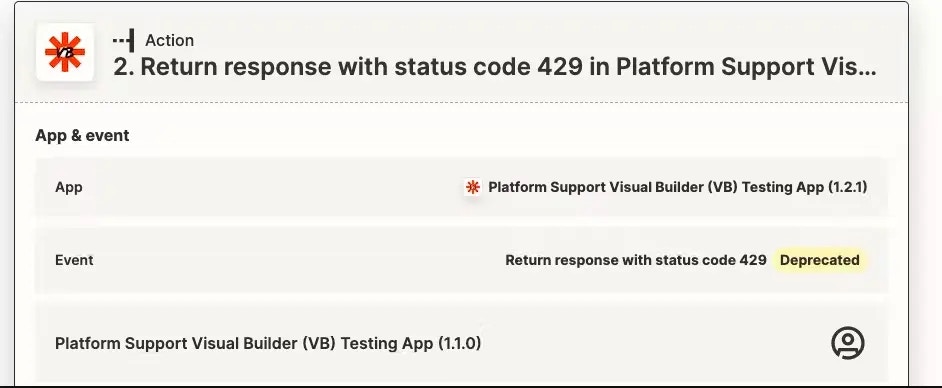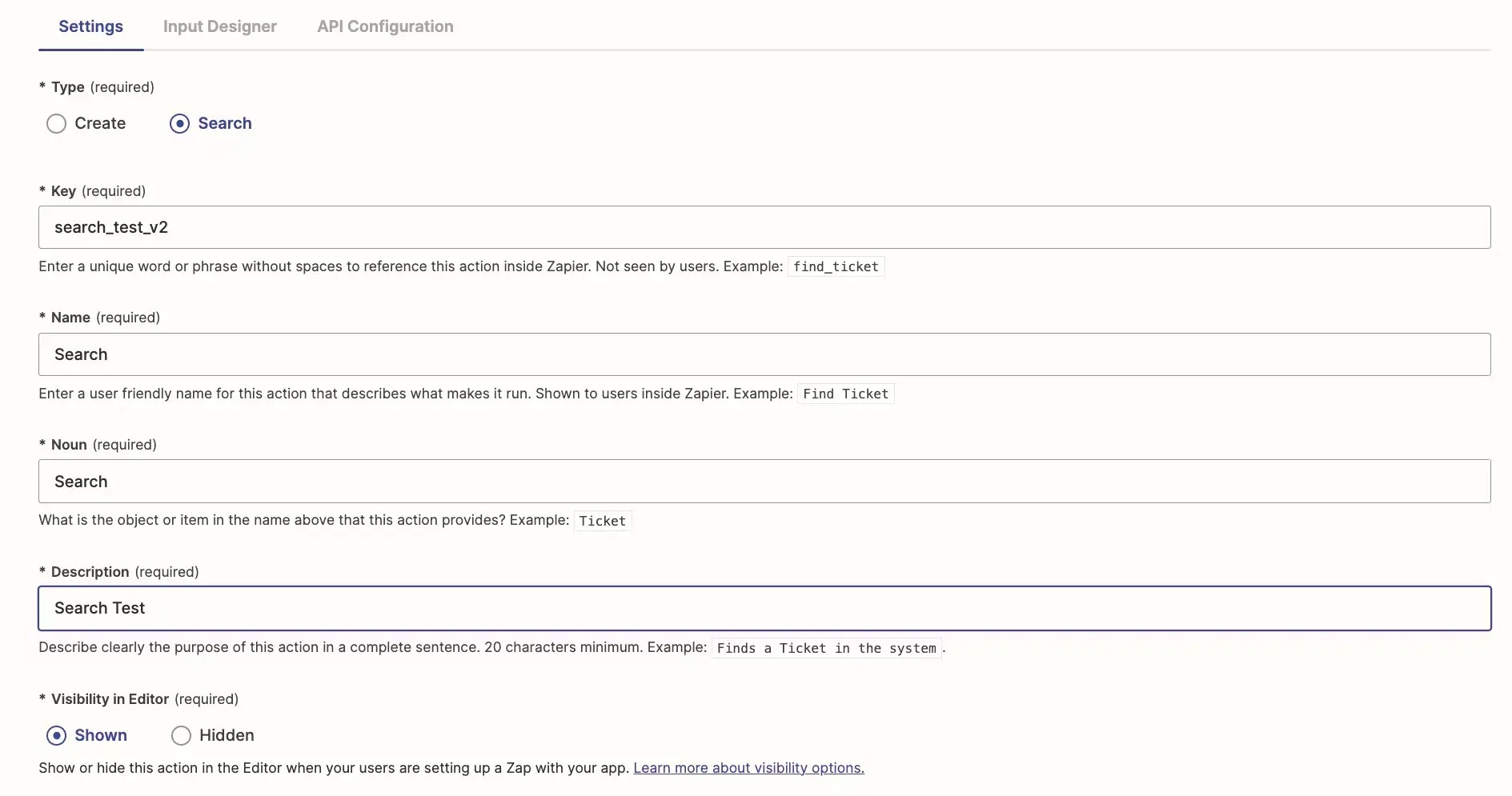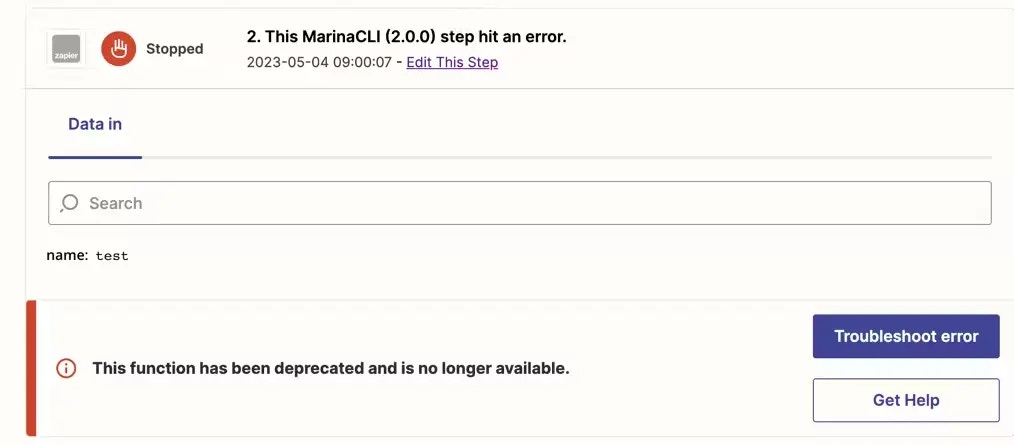Change scenario
In cases where a trigger/action/search’s custom code needs to be rewritten or a new v2 is replacing an older v1.Impact to users
Deleting a trigger/action/search in a new version is a breaking change - which would prevent migration of your users to the new version. Updating an existing trigger/action/search’s custom code would allow for migration but break users’ Zaps if the output changes.
new_contact or create_post, so if you remove that key from the app’s definition, or change it (possible in CLI apps only), this message appears when you attempt to migrate.
Best practices
- If you have already renamed the key (possible in CLI apps only) for a trigger/action/search, you’ll need to switch it back to the previous key to proceed with migrating users.
- If you need to remove a trigger/action/search, change its visibility to hidden instead. Use the Visibility Options dropdown in the UI, or the
hiddenkey in the CLI.

hidden trigger/action/search as available for selection.
-
If you need to add a new trigger/action/search that replaces the hidden one, create a duplicate and give it a new key (such as appending
_v2on the end), and keep the Name and Description the same if the functionality for a user is the same.
- This way existing Zaps continue to work once migrated with the previous (and now hidden) definition, and new Zaps will only be able to select the new definition.
- In cases where the endpoint in the hidden trigger/action/search will be sunset and begin to return errors in the future, the impact to users would be as follows:
- If you’d like to add custom errors within Zapier for the hidden trigger/action/search at the time of the endpoint sunset, you could consider the following:
z.errors.Error exception in the perform method of the impacted trigger/action/search. Learn more for apps maintained in the UI or the CLI.
Promote and then migrate users to this new version as close to the sunset date as possible.
The benefits of this approach are:
- Throwing an explicit exception will ensure impacted Zaps will hit the error ratio (and be turned off) at the earliest possible time.
- You can add a user-friendly message to the exception that users will see in both Zaps Runs on the Zap History and also in email error notifications, e.g. This function has been deprecated and is no longer available.
- Here’s an example of how a custom error message would be displayed on an action in the Zap History:

Need help? Tell us about your problem and we’ll connect you with the right resource or contact support.